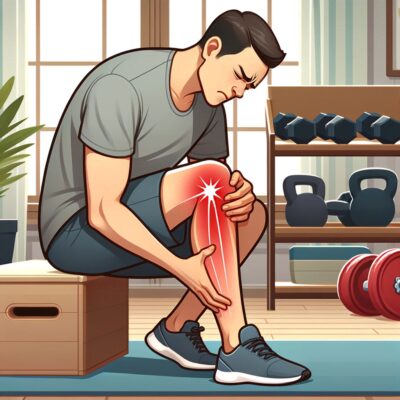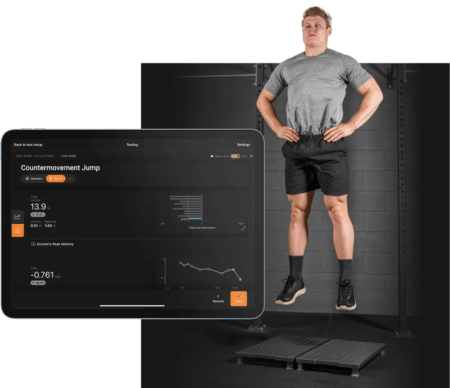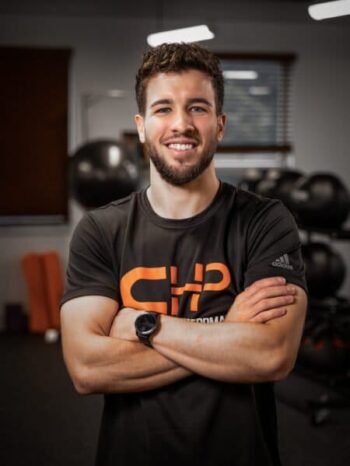Winter is here, and with it comes ski and snowboard season. After a fresh snowfall and a morning spent shoveling the driveway, I was reminded how quickly winter sports sneak up on us. I also thought back to a trip I took out west last year. It was an amazing experience, but I remember feeling more sore afterward than I had in years past.
As I approach 40, I have realized something many skiers and snowboarders experience. You cannot get away with the same preparation you once did.
If you ski or snowboard and deal with knee pain, or want to avoid it altogether, a little intentional preparation can make a significant difference. This is where knee pain physical therapy becomes especially valuable.
Why Skiing and Snowboarding Stress the Knees
Both skiing and snowboarding place repeated, high-load demands on the knees. Every turn, landing, edge change, and deceleration sends force through the knee joint. By the end of the day, fatigue sets in, technique changes, and the risk of pain or injury rises.
For snowboarders, rotational forces through the hips and knees are constant. Controlling the board requires the knees to tolerate twisting forces while staying stable. Skiers face repeated knee flexion and extension under load, especially when carving or navigating uneven terrain.
If you have ever noticed your knees becoming sore late in the day, struggling to carve clean turns, or feeling stiff after a trip, those are signs your body may not be fully prepared for the demands of the sport.
Our team sees this every winter, which is why knee pain physical therapy is one of the most common reasons skiers and snowboarders come into our clinics.
You can learn more about common causes of knee pain we treat here:
Knee Pain Physical Therapy in Bethesda and McLean
The Role of Strength, Endurance, and Control
One of the biggest misconceptions is that knee pain is only about weakness. In reality, skiing and snowboarding demand a combination of strength, muscular endurance, and control.
Most gym exercises are performed in mid-range positions for short sets. On the mountain, however, your knees live in deeper positions for long periods of time. This means your muscles must sustain force, not just produce it briefly.
In knee pain physical therapy, we often shift training to better match sport demands. This may include:
- Longer sets with moderate loads to build endurance
- Hinge-based exercises such as RDL and deadlift variations
- Controlled rotational drills to improve knee and hip stability
- Landing and deceleration training to prepare for jumps and terrain changes
Small programming changes like increasing reps from 5 to 10 or 12 can significantly improve how your knees tolerate a full day on the slopes.
Why Falls Matter for Knee and Joint Health
Falls are part of skiing and snowboarding. When they happen, the body often ends up in vulnerable positions. Knees, shoulders, wrists, and elbows are commonly exposed to sudden forces.
Most people train strength with their arms and legs close to their body. Injuries, however, tend to occur when limbs are farther away. Part of effective knee pain physical therapy includes preparing the body to tolerate force in these vulnerable positions.
This means incorporating drills that teach the body how to absorb force quickly and safely, helping protect the knees and surrounding joints when things do not go as planned.
If you have had a previous knee injury, this type of preparation becomes even more important. You can read more about how we approach post-injury knee rehab here:
Sports Physical Therapy for Knee Injuries
Do Not Forget About Ankles and Feet
Knee pain is often influenced by what is happening above and below the joint. Boots and bindings limit ankle mobility, which changes how force is transferred through the legs.
Snowboarders, in particular, know the burning sensation in the shins that can build up when riding the toe edge or getting stuck on flats. If the ankles and shins fatigue, the knees often compensate.
A comprehensive knee pain physical therapy program will address ankle strength, endurance, and control to reduce unnecessary stress on the knees.
Skill Level Matters
The demands on your knees vary depending on how you ski or ride. Higher-level skiers and snowboarders who ride steeper terrain or hit jumps experience much higher forces through the knees.
In these cases, plyometric training and controlled jumping drills are often incorporated to prepare the knees for rapid deceleration and landing forces. These drills are progressive and tailored to the individual, not random high-impact exercises.
This is a core principle of how we approach knee pain physical therapy for active adults and athletes.
Keep It Simple and Consistent
Preparing for ski and snowboard season does not require an overhaul of your workouts. In fact, simpler is usually better.
Choose two or three drills that closely match the demands of your sport. Spend five to ten minutes incorporating them into your warm up two to three times per week. This approach is often more effective than long, exhausting workouts that are difficult to sustain.
Consistency matters more than complexity.
When Knee Pain Physical Therapy Can Help
If you already have knee pain, a history of injury, or want a personalized plan to prepare for ski or snowboard season, knee pain physical therapy can help you address the root cause rather than just managing symptoms.
This is something we see consistently every winter at our Bethesda and McLean clinics. Our goal is to help you enjoy longer days on the mountain with fewer setbacks.
If you would like to learn more or schedule an evaluation, visit:
Schedule a Physical Therapy Evaluation
Skiing and Snowboarding Physical Therapy FAQs
Q: Why do skiers and snowboarders commonly experience knee pain?
A: Skiing and snowboarding place repeated rotational and impact forces on the knees. Fatigue, poor muscular endurance, limited mobility, or prior injuries can increase stress on the knee joint, leading to pain during or after time on the slopes.
Q: How can knee pain physical therapy help before ski season?
A: Knee pain physical therapy helps identify strength, mobility, and control deficits that increase injury risk. A targeted program improves knee stability, muscular endurance, and force absorption to better prepare the body for skiing and snowboarding demands.
Q: Should I do physical therapy even if I don’t currently have knee pain?
A: Yes. Preventive knee pain physical therapy can reduce injury risk, improve performance, and help you tolerate longer days on the mountain by preparing your joints and muscles for winter sport demands.
Q: What exercises help prevent knee pain for skiing and snowboarding?
A: Common exercises include hinge-based strength work, controlled rotational drills, landing mechanics training, and muscular endurance exercises. These movements better match the real demands placed on the knees during skiing and snowboarding.
Q: How often should I train to prepare my knees for ski season?
A: Incorporating 5 to 10 minutes of targeted knee-focused drills into your warm-up two to three times per week is often sufficient to build resilience and reduce knee pain risk.




